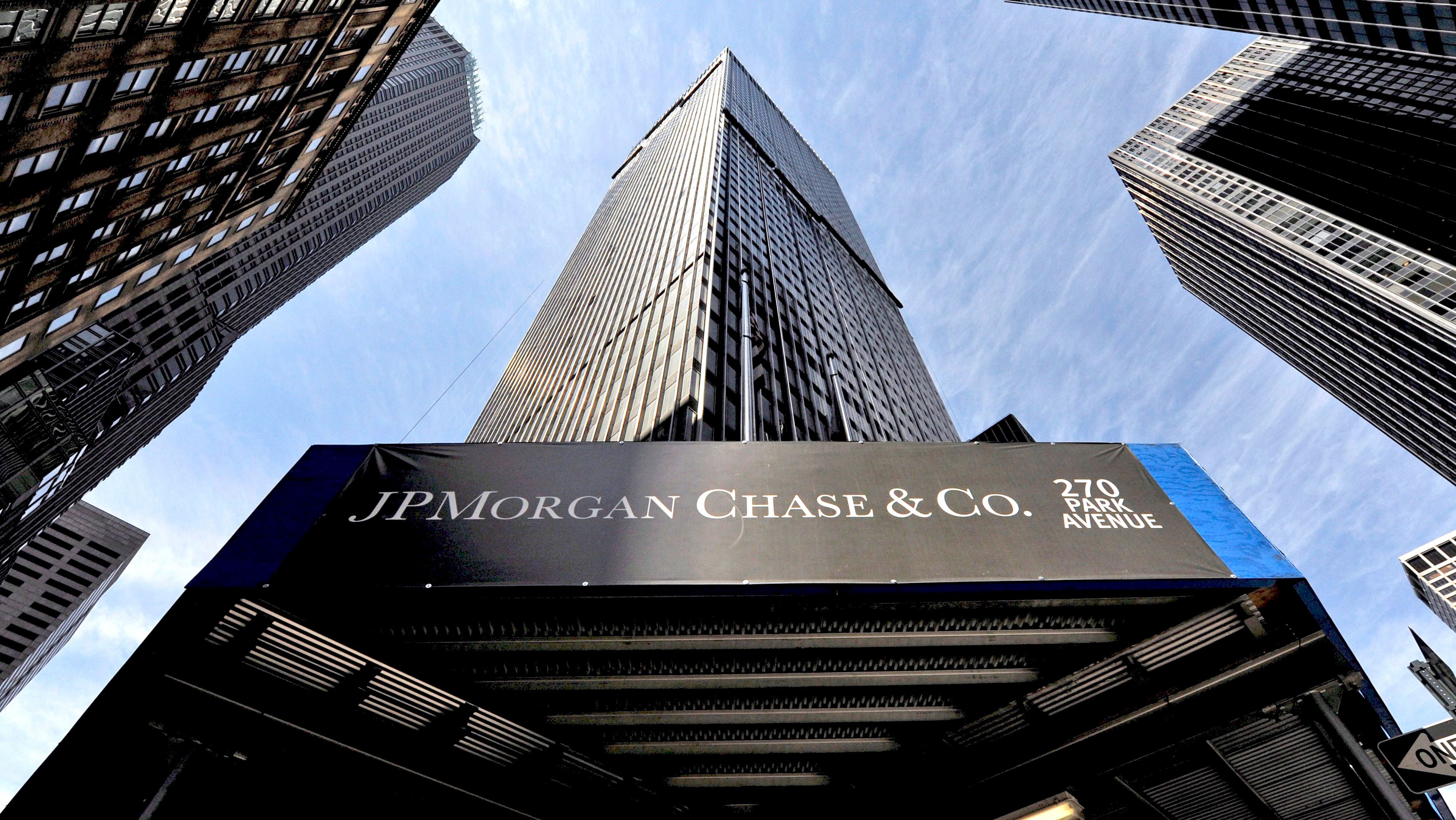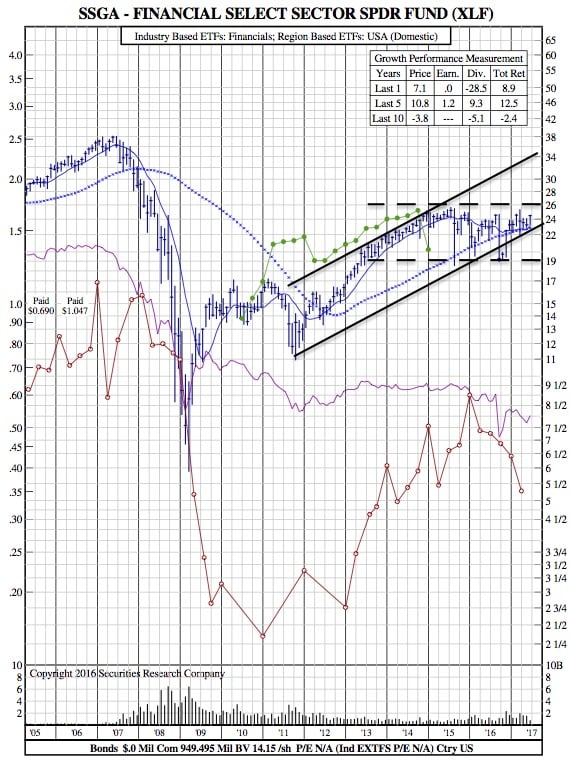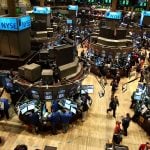Bank Stocks are set to Face Another Important Test (XLF 12-Year Chart)
 CNBC — U.S. bank stocks are at a crossroads — trying to regain the momentum they had earlier in the year amid signs that the Trump-trade cornerstones that had spurred the rally are not turning out as planned.
CNBC — U.S. bank stocks are at a crossroads — trying to regain the momentum they had earlier in the year amid signs that the Trump-trade cornerstones that had spurred the rally are not turning out as planned.
Investors will learn more about where the nation’s major financial institutions stand later in the week when the sector kicks off second-quarter earnings season. Financials broadly are expected to show profit growth of 6 percent, third-best of the 11 S&P 500 sectors, according to market data tracker FactSet.
“They will figure out a way to hit their earnings numbers, which are relatively low. But the revenue numbers, I think you’ll see some misses,” said Christopher Whalen, head of Whalen Global Advisors and an expert on the industry.
JPMorgan, Citigroup and Wells Fargo report Friday.
As banks have gotten a boost lately from positive stress-test results and plan in some cases to return record levels of cash to investors, the catalysts for more growth nonetheless appear less certain.
Commercial and industrial lending remains weak, and mergers and acquisitions and most capital markets activity have been moribund, with more active advisory activity only partly making up for the weakness in other areas.
“You’re going to see [loan] volumes light and the Street is going to have to trade on this,” Whalen said. “You’re refuting the core assumption of the Trump bump, which was expenses were going to fall and there would be a loosening of credit so you could do more. In fact, you have the opposite.”
Share prices on the rise
To be sure, things have turned up lately for banks. Rising Treasury yields have been a benefit, as has the all-clear the Federal Reserve gave banks for their plans to return capital to shareholders through buybacks and dividends.
The sector stocks, as measured by the SPDR S&P Bank ETF, has jumped about 7.5 percent since the beginning of June, most recently getting a post-stress-test push. However, banks face a number of headwinds, most of them coming from Washington.
Goldman Sachs analysts say “policy uncertainty” continues to haunt banks, which along with energy, materials, and industrials was supposed to fare best under the Trump administration’s economic agenda. Goldman said the issue has particularly hurt commercial and industrial lending and M&A activity. Announced deals in the U.S. fell nearly 16 percent in the first half of the year, according to Thomson Reuters.
“Commercial borrowers look to have adopted a wait-and-see approach, rather than taking on debt,” Goldman said in a note to clients. “This policy uncertainty can be partially attributed to a lack of personnel in key executive positions in the new administration. … While President Trump has fully confirmed his cabinet, we highlight that only 46 (8 percent) executive appointments requiring Senate confirmation have been finalized by the Senate.”
Analysts will have their eyes on a few key metrics outside of the usual top- and bottom-line numbers: consumer loan delinquencies, net interest margins, and trading levels. Goldman estimates that fixed income, commodities and currencies activity — FICC, in industry parlance — will be off 24 percent on a quarterly basis and 16 percent annually. That, in turn, could weigh on M&A for the rest of the year.
“That being said, if we gain more clarity on US fiscal and economic policy, this trend could reverse,” the note said.
Earnings estimates, in general, have been coming down for the banks, though the profit outlook for the financial sector remains solid. However, that 6 percent projected earnings gain comes down to 2.8 percent when excluding the gaudy 20 percent projected for insurers.
Early results from S&P 500 companies, however, look strong. With just 5 percent of the index reporting, 78 percent have beaten on earnings and 87 percent of revenue, the latter being a record-setting pace.
$XLF 12-Year Chart:




